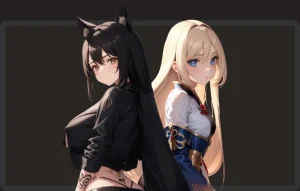Artificial Intelligence (AI) is making significant strides in the animation industry, particularly in creating hyper-realistic anime scenes. This technology not only enhances visual aesthetics but also optimizes production processes, making it a pivotal tool in modern anime production.
The Integration of AI in Anime Production
Real-Time Rendering
AI excels in rendering detailed anime scenes in real-time. This capability allows animators to visualize complex scenes without the lengthy rendering times traditionally required. For instance, rendering a scene that intricately depicts a bustling Tokyo street at night, complete with reflections and intricate light play, can now be accomplished in minutes instead of hours.
Character Design and Animation
AI algorithms assist in designing characters by suggesting modifications and improvements based on a vast database of anime art styles and characteristics. These tools can generate multiple design variations, providing creators with a plethora of options to choose from. Moreover, AI-driven software animates characters with realistic movements and expressions by analyzing human motion data, which ensures the animations are both fluid and lifelike.
Enhancing Efficiency and Reducing Costs
Implementing AI in anime production significantly boosts efficiency. It automates repetitive tasks such as coloring and in-between framing, which traditionally consume a substantial amount of time and labor. By automating these processes, studios can allocate their human resources to more creative tasks, thereby enhancing productivity.
Regarding costs, AI reduces financial strain by minimizing the need for extensive manual labor. For example, the use of AI in in-between animation can decrease the staffing needs from dozens of animators to just a few, overseeing the AI's output. This reduction can lead to savings of up to 50% on labor costs for larger projects.
Challenges and Considerations
Balancing Creativity and Automation
While AI can enhance productivity and creativity, there is an ongoing debate about maintaining a balance between human creativity and machine efficiency. Ensuring that AI tools enhance rather than replace the creative inputs of human artists is crucial.
Quality Control
Quality control remains a critical aspect, as AI-generated animations need regular supervision to maintain the high standards expected in the anime industry. The nuances of emotion and complex narrative elements often require a human touch to ensure they are conveyed effectively.
Conclusion
AI is transforming the way anime is produced, bringing about improvements in quality, efficiency, and cost-effectiveness. As technology advances, we can expect even more sophisticated applications of AI in anime, making it an exciting time for both creators and fans of this beloved genre.
For more insights into how AI is shaping the future of animation, explore ai anime.

